Massage Menu
If you can change your habits, you WILL change your life. Your habits are your prophecy. Endure and keep those habits, and your life will change just as simply as turning a dial to ‘overdrive’. It’s that simple.”
– Unknown
Kinetic SwedishKinetic Swedish® massage consists of a series of massage techniques that are performed on muscles and tendons. Its aim is to achieve a deep relaxation of the muscles and thereby favor an increase in the range of motion – hence the term “kinetic.”
Kinetic Swedish® massage techniques involve the whole muscle – from one point of attachment to the other. In addition to relaxation, the benefits are numerous and reflect on the whole musculoskeletal and organic systems. They are:
- reduction of stress through a relaxed nervous system
- improved blood circulation
- improved skin suppleness
- decrease in muscular tension
Craniosacral Therapy
A craniosacral therapy session involves the therapist placing their hands on the patient, which allows them to “tune into the craniosacral rhythm”. Craniosacral therapists treat mental stress, neck and back pain, migraines, TMJ Syndrome, and for chronic pain conditions such as fibromyalgia. Focus is placed on ‘re-booting’ an over-extended nervous system, thus allowing its parasympathetic component to take precedence. When the parasympathetic NS is in control of the body, the body can help to heal itself.
Structural Myofascial Therapy (SMFT)
Structural Myofascial Therapy (SMFT) is a deep, hands on therapeutic technique which, when coupled with postural somatic awareness exercises treat the body’s myofascial system. This fascia is always affected when there is injury or surgery or prolonged periods of physical inactivity: It becomes rigid, fibrous and less movable. This in turn creates stiffness and decreases range of motion. SMFT directly treats the myofascia, thus freeing up adhesions and tautness and increasing flexibility and end range of movement. With slow and deliberate maneuvers, this work affects the myofascial structure with impressive efficiency. Rejuvenating myofascial tissue that has become stiff and inefficient from injury, fatigue and over work is just one of the many goals and benefits of this work.
Thai Yoga
Thai Yoga Massage is performed on a mat on the floor; both client and practitioner are dressed in comfortable clothing allowing ease of movement and flexibility. No oils or creams are used. The client is stretched out by the therapist while being massaged at the same time. The best of yoga and massage combined!
Californian massage
The Californian massage is particularly relaxing, soothing, and more superficial pressure-wise than other modalities. With enveloping strokes that may sometimes start at your feet and end at the neck, you will leave this session nurtured and completely at peace.
Soft Tissue Release
Soft Tissue Release (STR) is a dynamic, highly effective modality that has an immediate and compelling effect on muscle and connective tissue. Combining the best of Myofascial Release, Therapeutic Massage and Active Assisted Stretching, we’re able to quickly treat both acute and chronic pain, while increasing flexibility and range of motion.
The technique involves applying precise pressure during a specific stretch performed in multiple planes of movement.
Common and immediate results include: Fast and permanent reorganization of scar tissue, targeted muscle(s) return to their proper resting length, muscle imbalances are corrected, associated pain is decreased or eliminated altogether and muscle performance is improved.
Great for athletes who need treatment for injuries/maintenance or those with a consistently tight musculature.
Osteopathy
Osteopathy is a form of manual medicine that is predicated on the following four concepts:
1)Structure governs function and vice-versa-Proper anatomical integrity of any structure as well as its capacity to be able to be freely mobile within its anatomical parameters is vital to its proper physiology (functioning).
2)The role of the artery is absolute-In fact, this has since been changed to include all circulatory systems of the body (arterial blood, venous blood, lymph, cerebral spinal fluid (CSF)), suggesting that health of a structure is contingent on its capacity to allow for proper circulation; Permitting nutrients and oxygen to be brought to cells, waste to be carried away, and the proper transportation of vital hormones.
3)The body functions as a unit-No, the body is not comprised of a group of separate and independently functioning parts with no regards for one another. Instead, every distant corner of our bodies are related to one another via the circulatory system, the nervous system, the immune system, the endocrine system and our connective tissue (READ: What is fascia?) that allows for complete and utter interconnectedness in health and often times, dysfunction and disease as well.
4)The body has a capacity for auto-regulation-The body has the inherent ability to heal itself. But this may only be achieved when its systems are allowed to operate fully and without constraint. An osteopath’s major role is to facilitate this auto-regulation by removing obstacles in the circulatory, neuronal and musculo-skeletal systems and simply letting this inherent capacity for health the body possesses to handle the rest.
Osteopathy may help, but is not limited to helping:
- Acute or chronic muscle aches and pains
- Digestive issues such as irritable bowel syndrome, bloating, hiatus hernia, malabsorption issues
- Autoimmune conditions such as multiple sclerosis, anklyosing spondylitis, rheumatoid arthritis
- Headaches, including migraines and pressure headaches
- Certain allergies
- Fibromyalgia and chronic pain syndromes
- Reproductive and gynecological issues, such as menstrual pain and irregularity
- Unexplained infertility issues (pelvic misalignment)
- Chronic pelvic pain syndromes
- Degenerative disc disease, bulging or herniated discs
- Systemic conditions such as hypertension, diabetes, anxiety
- Whiplash injuries from accidents
- Concussion syndrome
- Repetitive strain injuries, including carpal tunnel
- Frozen shoulder
- Neurological symptoms such as sciatic pain, or positional numbness and tingling


